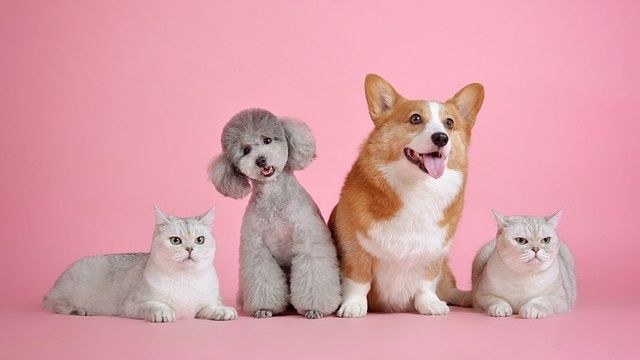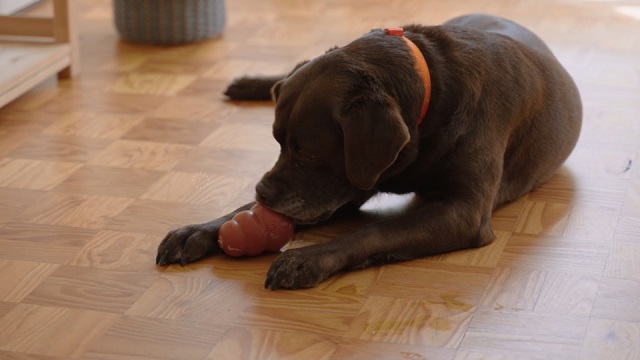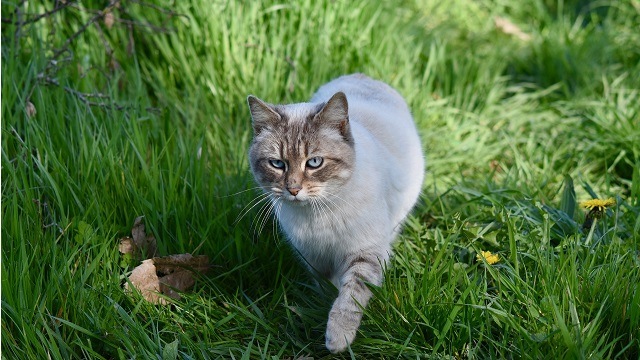Nowadays it’s almost impossible not to be overwhelmed by the wide range of pet diet options available on the market. Considering this, how exactly should we feed our buddies? Don’t worry, we prepared a few tips for you regarding cat diet & dog nutrition! One thing we can assure you: it is definitely not a matter of quantity, but of quality!
What is a high-quality diet, exactly?
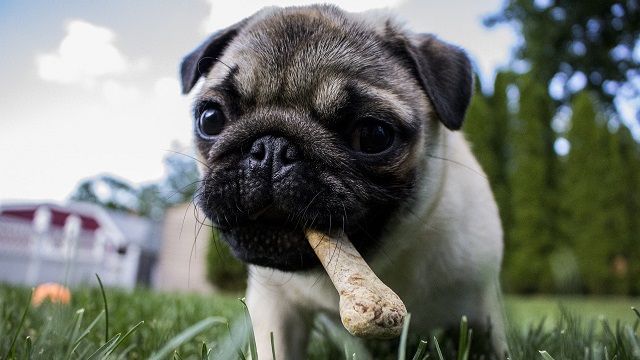
It’s common knowledge that what we eat reflects in our health, and this is also true for our pets. High-quality nutrition is essential to maintain each animal’s well-being, as well as to improve their response to disease and injury. Proper feeding throughout all life stages not only helps prevent diet-related diseases, but also enables a good management of other health conditions like diabetes, chronic kidney disease or allergies.
A high-quality diet is one of the most important things you, as an owner, can provide to keep your pet healthy and active.
Basically, a high-quality diet is one that is complete and balanced, containing all of the nutrients (proteins, carbohydrates, fats, vitamins, minerals and water) necessary to support your pet’s bodily functions. Each ingredient brings unique nutrients, and that’s why a diet based solely on one type of ingredient isn’t enough.
Choosing what best fits your pet’s needs
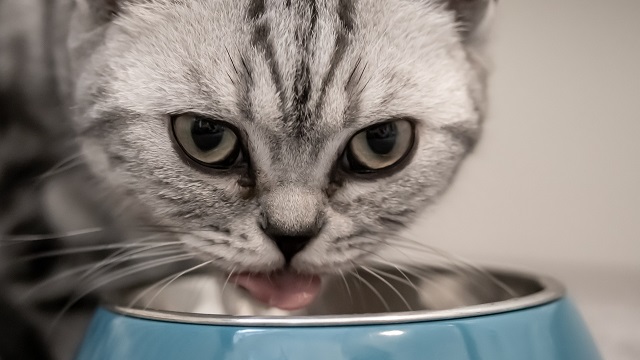
Selecting a type of food that will keep your pet healthy/energetic starts with knowing their eating habits and lifestyle.
It’s mandatory to buy food that suits your pet’s life stage (puppy/kitten, adult or geriatric). As cats grow older, they’ll need special support to reduce the risk of kidney issues, mobility problems and other conditions. On the other hand, as dogs enter their golden years, their nutritional requirements will need to support more specific needs for mobility and brain function, for example.
Breed size, physiologic status and physical activity should also be considered when choosing a suitable diet. If your growing giant-breed puppy has a deficient diet, they’re at higher risk of developing osteoarticular diseases. Once again, this is due to the lack of some nutrients and minerals.
When assessing if the food you have chosen is suitable, pay attention to your pet’s body and coat condition: if your best friend appears to be thriving on the food and has a glossy coat, lots of energy, and a fit appearance, everything should be just fine!
Enjoying these cat diet & dog nutrition tips? Let’s continue!
The proper amount is also essential
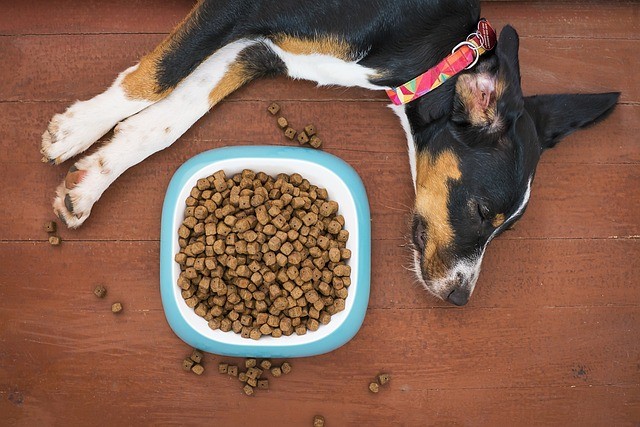
The amount of food your dog or cat should eat depends entirely on their size, age and amount of exercise. Following the feeding charts on pet food labels as a guide sets a fair baseline in terms of quantity. Still, keep in mind that you might need to make some adjustments: start by checking on the label the amount recommended for your pet’s weight range. If their actual body weight is close to the lower end of the range, feed them the smaller recommended amount. If they’re closer to the higher end of the range instead, they may need more food.
Also assess their activity level. Lap and lazy pets, who get little exercise, may need 10% less than what’s recommended on the package label. An active dog that exercises outdoors may need 20% to 40% more. An outdoor cat may also need an increase!
Serious illness, pregnancy, or nursing heighten an animal’s energy needs as well. If in doubt, ask your Maven Vet or your local Vet about adjusting the type or quantity of food!
If possible, it’s always best to follow a personalized plan. Maven’s Vet Team can prepare a custom-made diet plan for your pet’s specific necessities, and they’re also available to provide any cat diet and dog nutrition tips you may need.
How often should your pet be fed?
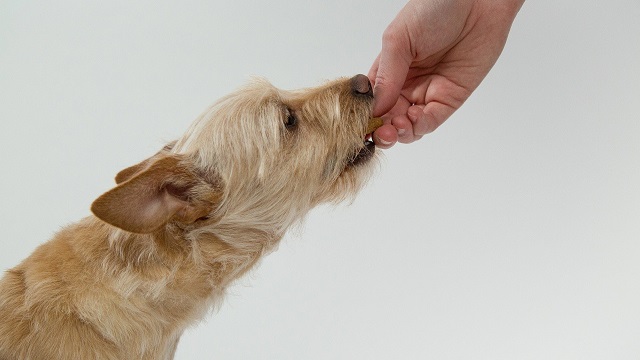
Once again, you should take some variables into account: age, behavior and number of animals.
Puppies and kittens up to 6 months old should be fed 4 to 5 times a day. Afterwards, and during adulthood, dogs should be fed twice a day. Cats can be fed in one of two ways: meal-feeding or free-feeding.
If you adopt a meal-feeding pattern, feed your furry friend 2 to 3 times a day, depending on their activity level. You should definitely choose this method if you have an overweight cat or simply a glutton! Also, adopt it as when you have more than one cat, to make sure each eats properly.
On the other hand, free-feeding is best suited for those animals who eat in small amounts during the day. Nevertheless, you should always measure the required amount and avoid filling up the bowl, even if there’s no food left. This will teach your cat to eat little portions throughout the day, rather than gobble it all down at once.
And what about commercial pet food?
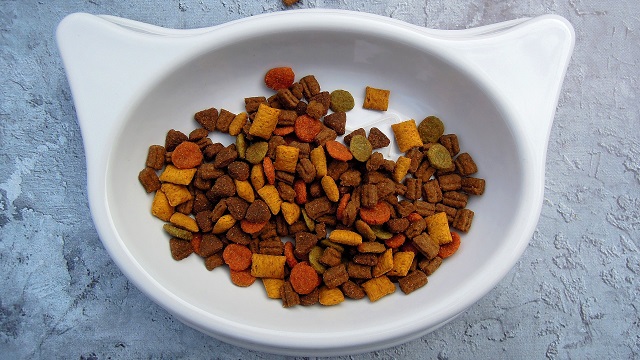
It may not look like much, but commercial food is designed to meet all of a pet’s nutritional needs. Most products have a balanced formula containing meat, grains, vegetables, fruit and vitamins. Usually they constitute a safe and healthy feeding option.
Above all, just keep in mind that the most suitable nutrition depends not only on the food quality, but also on the kind of animal you are blessed to own! Once again, if you have any doubts or would like personalized cat diet and dog nutrition tips, just reach out to our Maven vets. They’re always glad to help!
Maven is all about proactive pet care. Be your best friend’s best friend by giving them 24/7, high-quality, industry-leading vet care to improve their mental health, physical health and more. No more frantic googling or unneeded stressful visits to the vet – Maven helps you save hundreds while also ensuring your pet lives the best life possible. Get your kit now!

